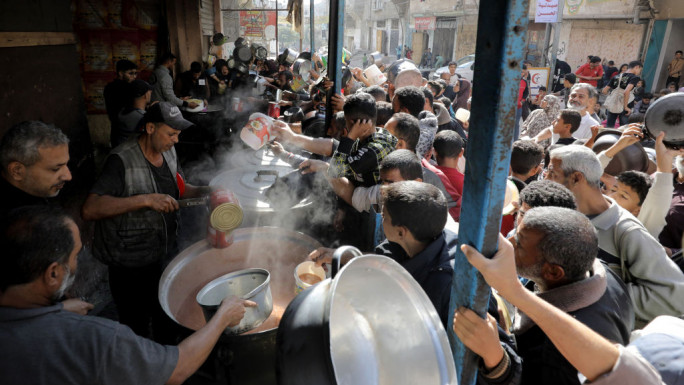
The US makes the rules, and Syria massacre was no exception
America doesn’t want to know what happens in its wars. It wants to believe each war starts in righteousness. It wants to believe our side is clean, as any force of righteousness must be. And then at some point it wants to forget about it all, absent a few business class upgrades for soldiers flying home next week over Thanksgiving. But what happens when the truth, the overriding truth bigger than a single event, peeks out from under the heavy cover of lies?
You may remember America went to war in Syria in 2015 under Barack Obama. It actually became a major campaign issue in 2016, with the question, “would you put boots on the ground?” pervading the debates. Trump, who did not overtly support that, did it anyway, and now under a third president, some 900 Americans are still on the ground in Syria on a road looking for an exit.
It would be surprising if one out of 100 Americans knew today that we were still at war in Syria. Don’t ask Senator Tim Kaine, Clinton’s running mate in 2016. During a recent hearing he declared about America, “I am relieved that for the first time in 20 years, children being born in this country today are not being born into a nation at war.” It is doubtful Kaine or anyone, when informed of the ongoing fight in Syria, could explain why it is still going on.
"We allow the United States to portray its wars as precise and humane because in order to politically sustain war on an Orwellian time frame it is necessary to believe that"
So it was kind of surprising to see the New York Times publish an investigation into a more than two-year-old U.S. air attack in Baghuz, Syria, one which killed some 80 women and children, on the front page. Though the entire strike was observed on drone video, a precise death count is unlikely because the weapons dropped — totaling over 2,500 pounds of explosives — would have reduced most of the dead to a fine, pink mist. Hard to count that. The amount of explosives used against these undefended human targets in the open was roughly the equivalent of that carried by a B-25 bomber during WWII. Nothing surgical about that.
The rest of the Times article is a familiar tune: The 2019 Baghuz strike was one of the largest civilian casualty incidents of the war, but was never publicly acknowledged by the United States. A military legal officer flagged the strike as a possible war crime, requiring an investigation. But at nearly every step, the military moved to conceal what happened. The death toll was downplayed. Reports were delayed, sanitized, and of course, made classified. Coalition forces quickly bulldozed the blast site. A whistleblower in contact with Congress lost his job.
The New York Times pieced together what happened, detailed the cover-up, and published the story over the weekend. A CENTCOM spokesperson stated “We abhor the loss of innocent life,” but stood by the airstrike as justified under whatever self-made rules they were following. It is very unlikely anything more will come of all this. The cindered bodies of women and children are simply more ghosts of American war policy.
A U.S. airstrike in 2019 that killed dozens of civilians in Syria was buried by the military. An investigation by The New York Times pieced together what happened. https://t.co/8sbq3ajmc6
— The New York Times (@nytimes) November 13, 2021
There is of course so much to be outraged over, including that good people were trying to report something very wrong through the chain of command and at every turn were blunted and thwarted. There seems to be no such thing as oversight or accountability. And yes, the whistleblower got burned. Again.
But the real outrage is the one not acknowledged by the Times. They treat this as if it is all new — the shock of civilian deaths, the cover-up, the whistleblower himself the new target. But we refuse in our new righteousness to acknowledge it is closer to the norm than the exception. After nearly 1,000 air strikes in Syria and Iraq in 2019, using 4,729 bombs and missiles, the official military tally of civilian dead for the year was only a disingenuous 22. As a State Department civilian embedded with the military during Iraq War 2.0 I saw many remains of buildings hit by airstrikes. It was very difficult to maintain the illusion that those buildings — each with four floors and multiple apartments in a regular neighborhood of small dwellings — had only insurgents inside when they were obliterated. But that’s what we told ourselves.
We choose to use the term war crime only when we can pin it on a rogue platoon or a sadistic SEAL. But when it scales up to the use of modern weapons against civilian clusters it turns into some sort of quasi-legal event to be debated and tsk’ed over in the passive voice. Were mistakes made? Can we find a way to reduce it all to some unavoidable error, maybe by some whipping boy who can be punished at little overall cost to the larger body that put him on such fertile ground for atrocity?
We allow the United States to portray its wars as precise and humane because in order to politically sustain war on an Orwellian time frame it is necessary to believe that. We need to believe every report of civilian casualties is investigated and the findings reported publicly, a model of accountability. We believe these things so dearly that we are shocked to read what happened with one airstrike in Syria and rush to the psychological refuge of focusing on the cover-up not the killing.
The preferred narrative is to sound like a Netflix log line: “A handful of brave reporters knew what was right and risked it all to expose the crime!” We conveniently skip over the cover-up of the cover-up — the one that papers over the fact that what happened in Syria was because we were at war against a dubious enemy under dubious rules of engagement for a dubious purpose and, to hell with it, people are just gonna die under those circumstances.
No different than Vietnam or Fallujah, dozens of Afghan wedding parties, or when hospitals were targeted and innocents died. It is the conversation America has avoided since the day we proclaimed ourselves the World Police and unilaterally declared our right to be right, simply because it was us doing it, whatever “it” might be. It is a conversation about the difference between combat and killing. We still treat Hiroshima — and Baghuz — as the exception, and not the rule.
Peter Van Buren is a retired United States Foreign Service Officer who served on two Provincial Reconstruction Teams for the U.S. government in Iraq, after which he wrote the book, We Meant Well: How I Helped Lose the Battle for the Hearts and Minds of the Iraqi People, in 2012.
This article was originally published by our friends at Responsible Statecraft.
Have questions or comments? Email us at: editorial-english@alaraby.co.uk
Opinions expressed in this article remain those of the author and do not necessarily represent those of The New Arab, its editorial board or staff, or the author's employer.





 Follow the Middle East's top stories in English at The New Arab on Google News
Follow the Middle East's top stories in English at The New Arab on Google News


